The flight from Damascus to Baghdad took Swiss traveller Annemarie Schwarzenbach over the Syrian desert with its herds of gazelle and dried-up watercourses. The pilot invited her into his cockpit where she saw the Euphrates River gleaming tantalisingly below, nomad tents with their wattle defences standing out against the wilderness. This second leg of her journey lasted a month in the spring of 1934, and took in a number of important archaeological sites: Babylon, Ur, Uruk-Warka, Hayy, Ctesiphon and Tell Asmar. These were for the most part along the Tigris and Euphrates basins and within striking distance of Baghdad.

Portrait of two youths, Iraq, 1934. Photo by Annemarie Schwarzenbach. Swiss Literary Archives, Bern.
After a couple of months under the French mandate, she was entering the British sphere of influence. She settled into the Maud Hotel. Her group of archaeology enthusiasts headed off the following day over the rough roads to the holy city of Karbala, site of the tomb of the Prophet’s grandson, Hussein, and a major Shiite center of pilgrimage. Along the road, cars and flat-bed trucks ferried the dead, blessed by burial in the holy city. Her view of the Shiites was not favourable:
In Iraq the Shiites are more numerous – by a million and a half – than the Sunnis. I’ve heard liberal parliamentarians refer to the Shiites as the “curse” of the country. In any case, they are resolutely opposed to any sort of development, and they hate, not just Europeans, but anything smacking of progress or change, since their beliefs are regressive, stuck in futile recriminations, a permanent state of hostility and closed-mindedness. The Persians are even more fanatic than the Iraquis – and Karbala is practically a Persian town.
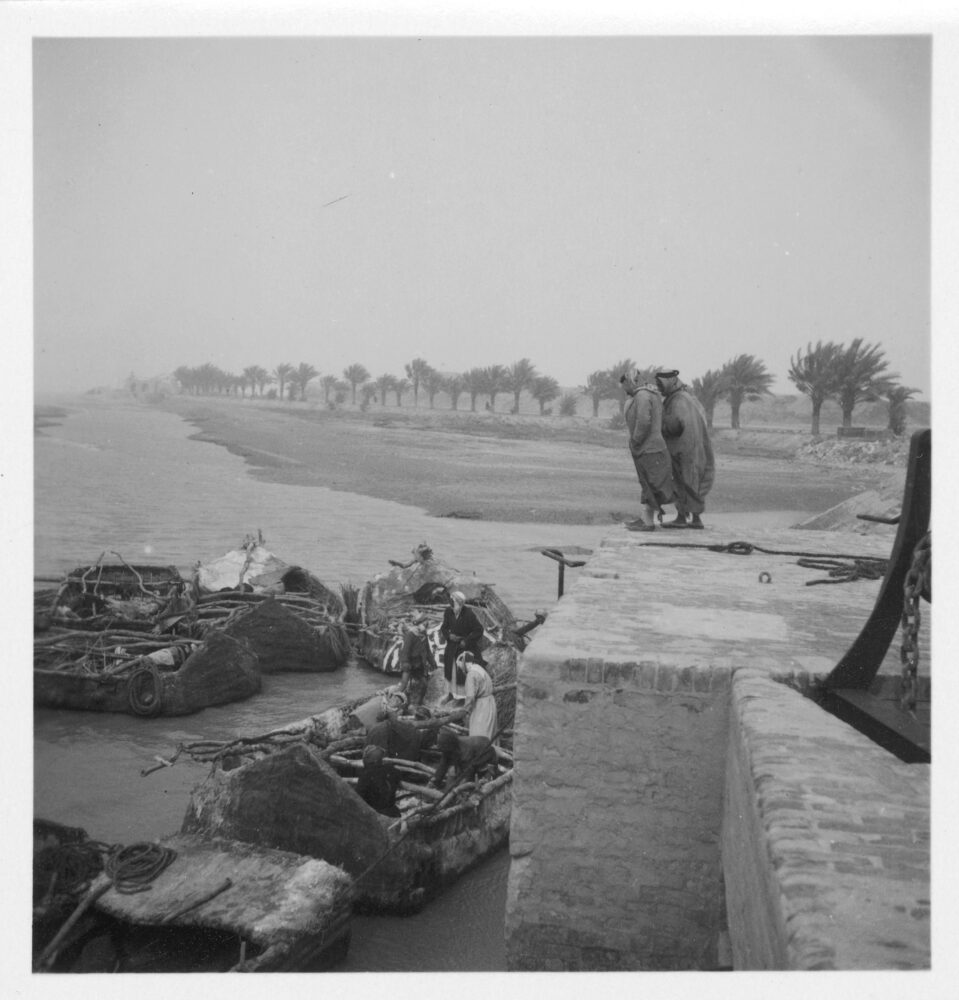
Dam with fishing boats, at Al-Hindiya, canal east of Karbala on the Euphrates, Iraq. Photo by Annemarie Schwarzenbach. Swiss Literary Archives, Bern.
She was coming into the ambit of the English traveller and diplomat Gertrude Bell (1868-1926) whose extraordinary life story bears a number of points of comparison with Annemarie’s. Bell was a horsewoman, a skilled photographer, a practical rather than enthusiastic feminist who helped establish the first girls school in Baghdad, and aristocratic in her habits; she may also have been lesbian. She committed suicide in her Baghdad home eight years before Annemarie arrived, and memories of the Arabist and stateswoman were still fresh.

Annemarie proposed to Klaus Mann a piece she had written on Bell for their magazine Die Sammlung, but this never appeared and the manuscript is now lost. What affinities would it have revealed between these two travel writers? Annemarie liked the poeticism of Bell’s writing and her adventurous life was the perfect subject for a young acolyte with one foot in journalism and the other on the Eastern roads.
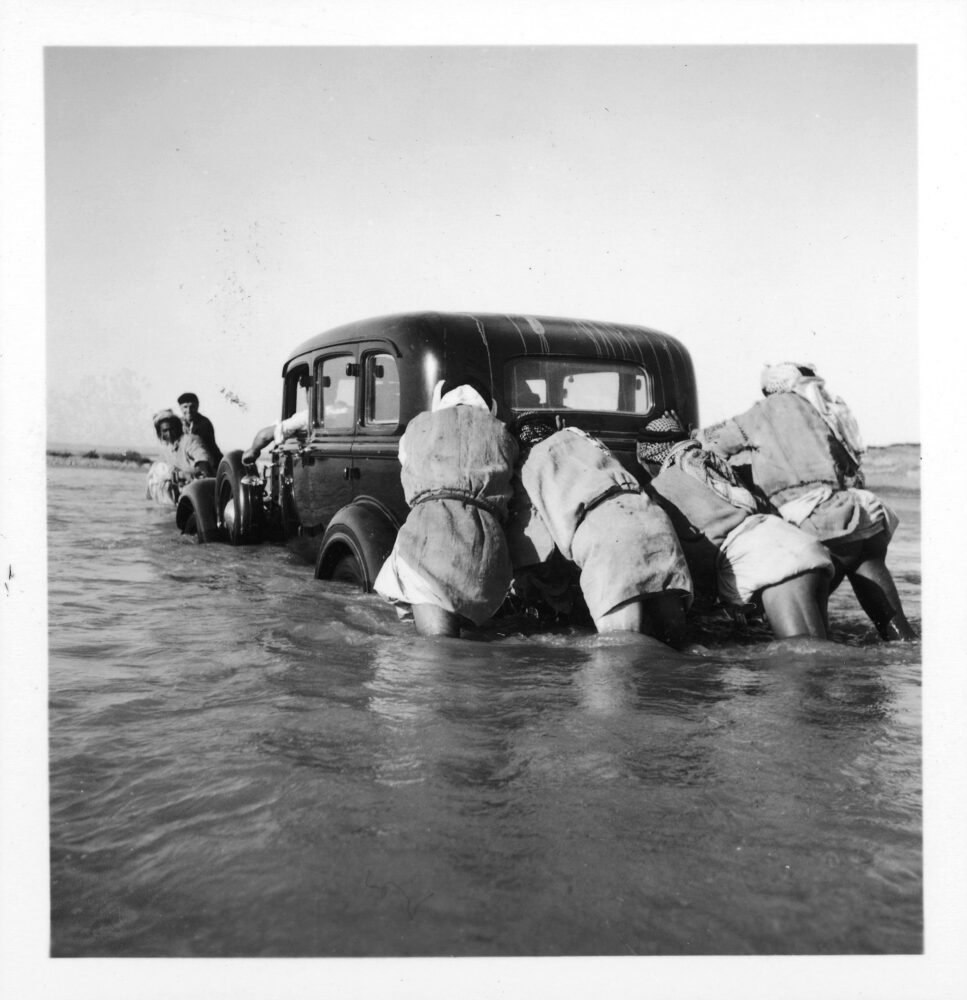
Mosul, Irak, flood, 1934. Photo by Annemarie Schwarzenbach. Swiss Literary Archives, Bern.
At the Ur excavations, the discoverer of the royal tombs, Leonard Woolley, showed her around:
Woolley testified to the presence of a stratum dating from the time of the great flood. He speaks of these things with great affection, as though they had taken place only yesterday. And one forgets the aeons gone by since and begins to see the humanity behind the remains unearthed here.
Woolley had been a colleague and good friend to Bell who would make regular visits for what she called the “division” – the division of spoils, with half going to the Iraqi government, of which Bell was the representative, and half to Woolley’s backers, the British Museum and the University of Pennsylvania. When they couldn’t agree, Bell would toss a coin.

Nedjef, Iraq, horse-drawn tram between Kufah and Kerbala, 1934. Photo by Annemarie Schwarzenbach. Swiss Literary Archives, Bern.

Excavation of the lion of Babylon, 1934. Photo by Annemarie Schwarzenbach. Swiss Literary Archives, Bern.
Between excursions up and down river, across dusty plains and saltbeds, she observed life in Baghdad, its souks, its attempts at modernisation, the royal and diplomatic comings and goings. She was able to pick up copies of the Swiss newspapers and read her own articles. Baghdad was a river town, living by the “clay-colored, gurgling current, the far bank invisible, cloaked in yellow dust as thick as fog.”
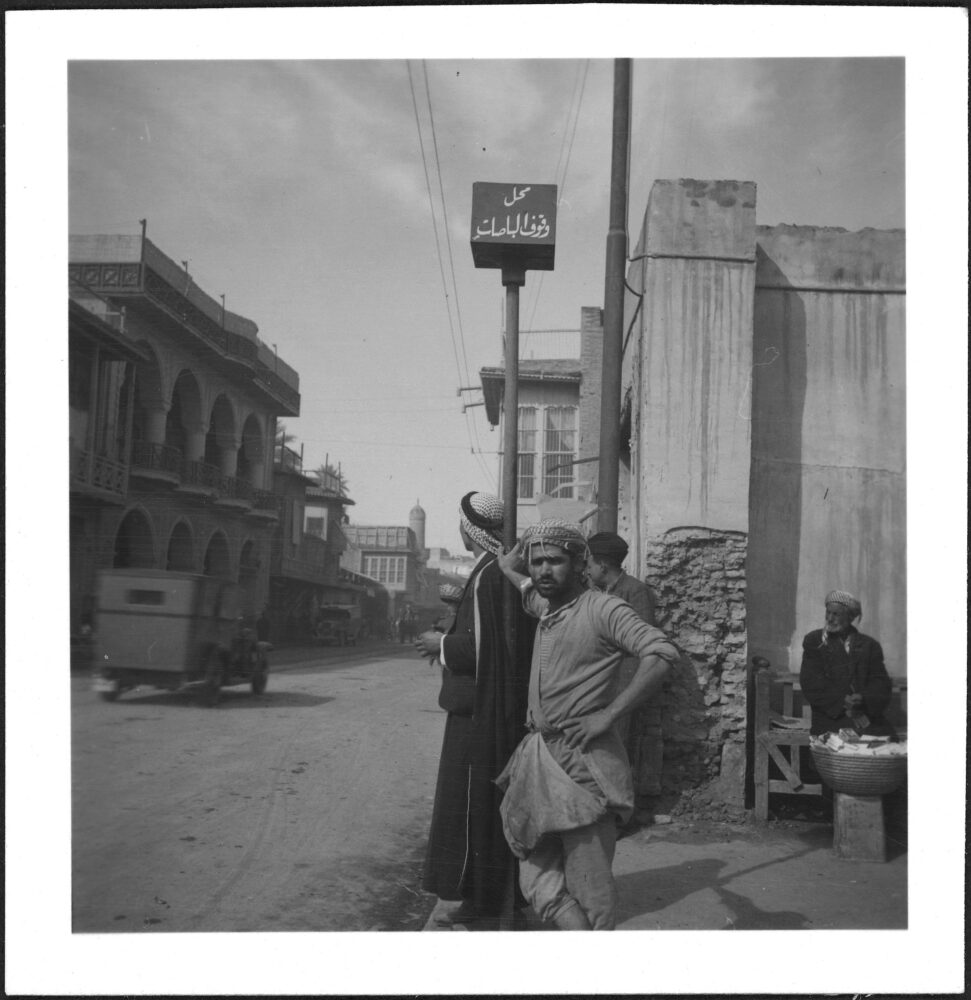
Baghdad, group of men at a bus stop, 1934. Photo by Annemarie Schwarzenbach. Swiss Literary Archives, Bern.
In the Maud Hotel, bastion of the British, while a diplomatic reception took place downstairs, Annemarie seems to have scored some morphine. Allaying Klaus Mann’s concern in her letter, she mentions the early starts at 5 a.m., her lack of time to indulge, and the punishing after-effects which both of them knew well by this stage.
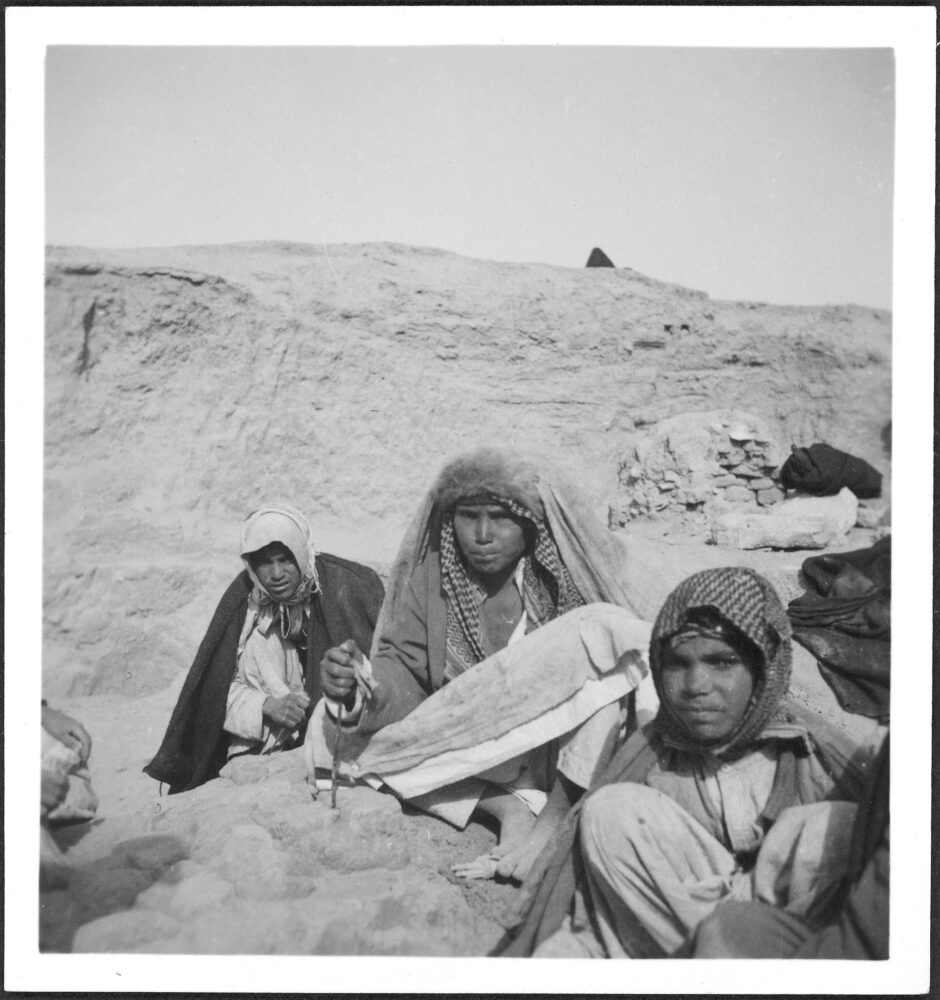
Diggers at Uruk, Iraq, 1934. Photo by Annemarie Schwarzenbach. Swiss Literary Archives, Bern.
Annemarie entered the final leg of her journey aware that all along she had been chasing Eden. Once the snows had cleared, they crossed the border at Khosrovi and over the Zagros Mountains, through Kurd territory, unspooling the old silk road which had made her family’s fortune and the route Darius had taken when he expanded his empire into the Mesopotamian plain. She had made arrangements to join the archaeological dig at Rhages (Ray, Sahr-e Ray), thirty miles south-east of Tehran, led by the German-American archaeologist Professor Erich Schmidt (1897-1964) under the auspices of the University of Pennsylvania Museum of Archeology and Anthropology, and the Boston Museum of Fine Arts.
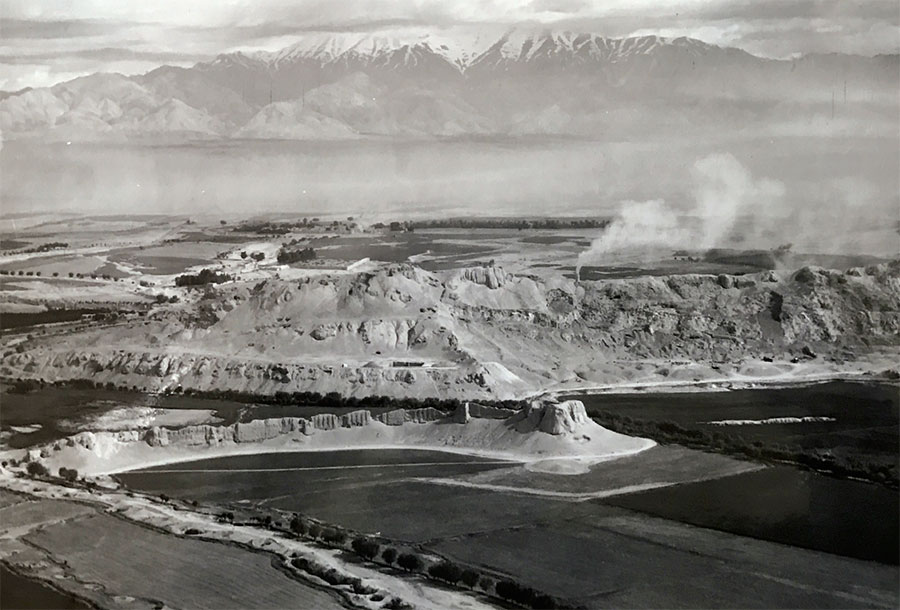
View of the citadel at Rayy. Courtesy of The Oriental Institute, University of Chicago, image AE-333.
At Kermanshah the fields of poppies prompted her to cite Virgil; Haroun al-Rachid gave opium as a gift to Charlemagne; mothers put a bit on their fingernail to soothe teething children. At Tagh-e Bostan, the Gate of Asia, she climbed for an hour to Bisotun to view the magnificent 4th century BCE rock inscriptions in Babylonian, Alamite and Old Persian.
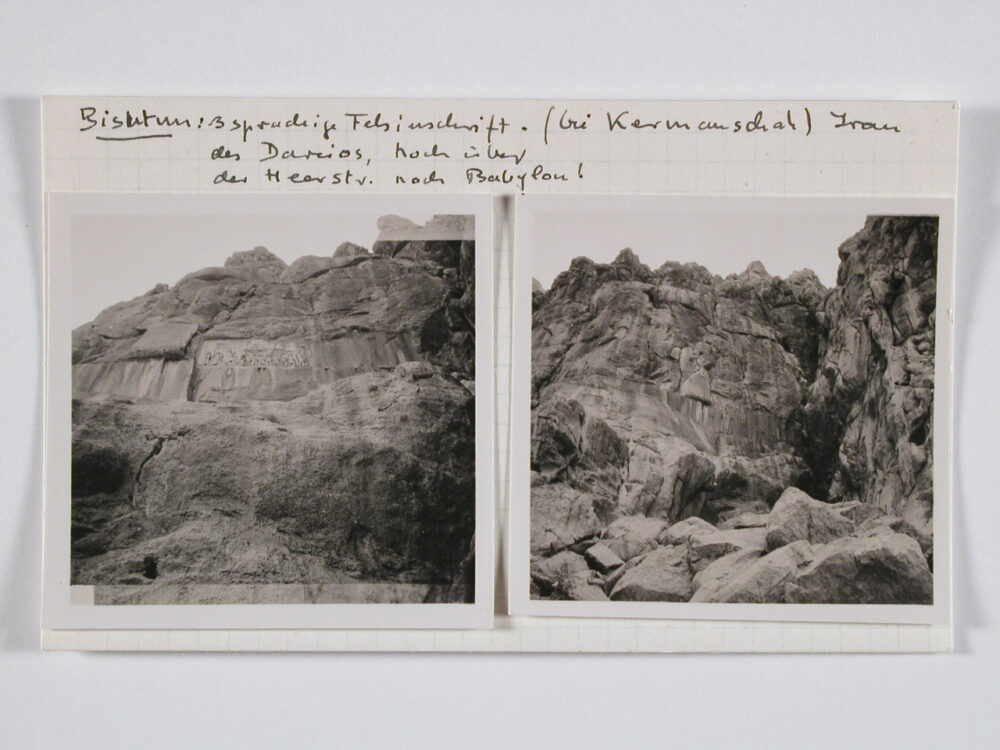
Bisutun, Iran, 1934. Photos by Annemarie Schwarzenbach. Swiss Literary Archives, Bern.
They crossed the Asadabad pass and came down into Hamadan and spent the night in the Hotel de France. It was early March and in the mountains there was fresh snow but signs of spring lower down. Tea and Russian vodka was served and Annemarie sat down and wrote. The following day, all along the road, there were resting camels in the caravanserais. Faces were more Mongol, residue of the eleventh century invasion by Genghis Khan. The sacred Mount Damavend rose over Tehran, a town Annemarie compared to Innsbruck for its proximity to the mountains.
Sources cited
Annemarie Schwarzenbach, Winter in Vorderasien, p. 133, p. 139, p. 161-2. Translated by Padraig Rooney.

